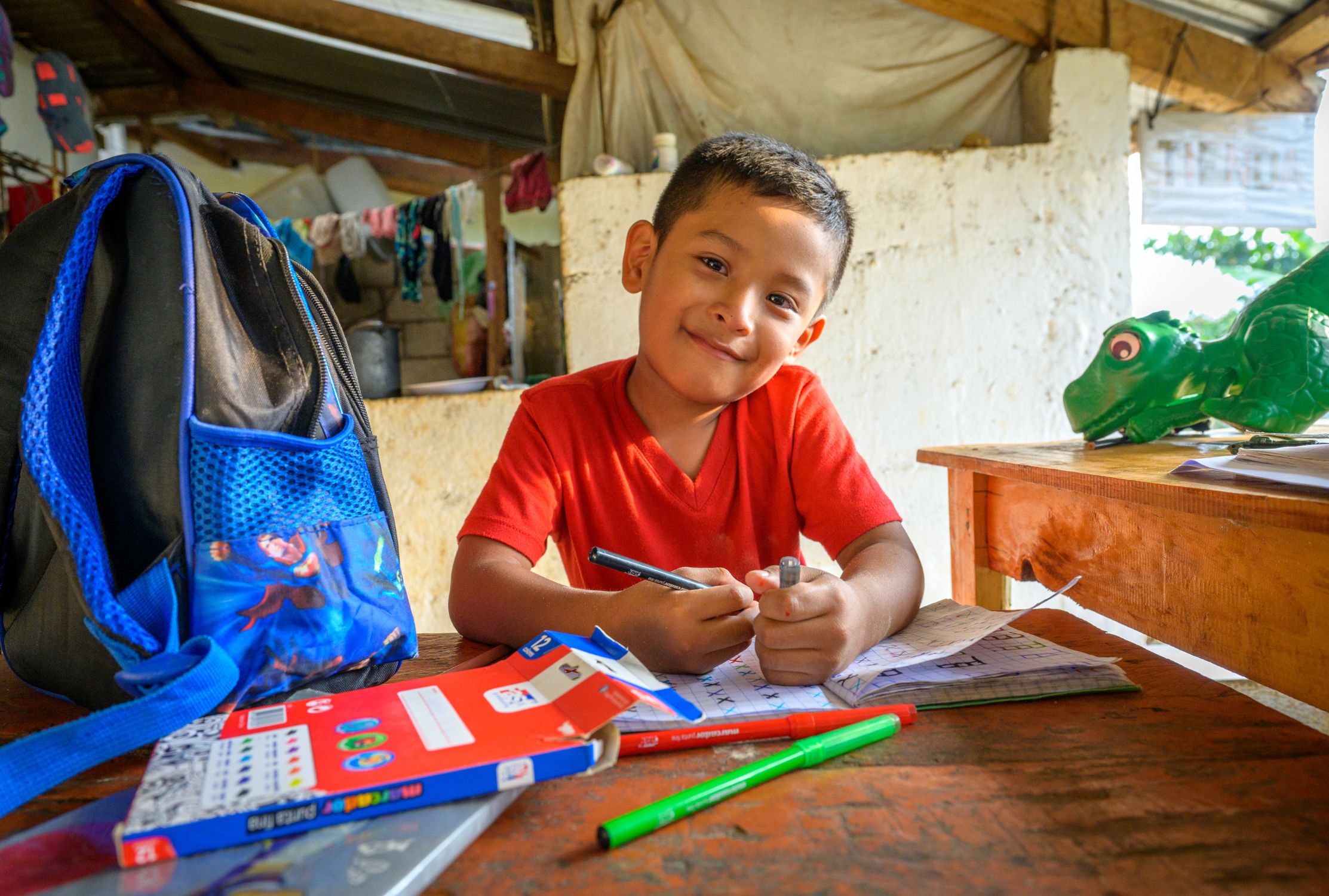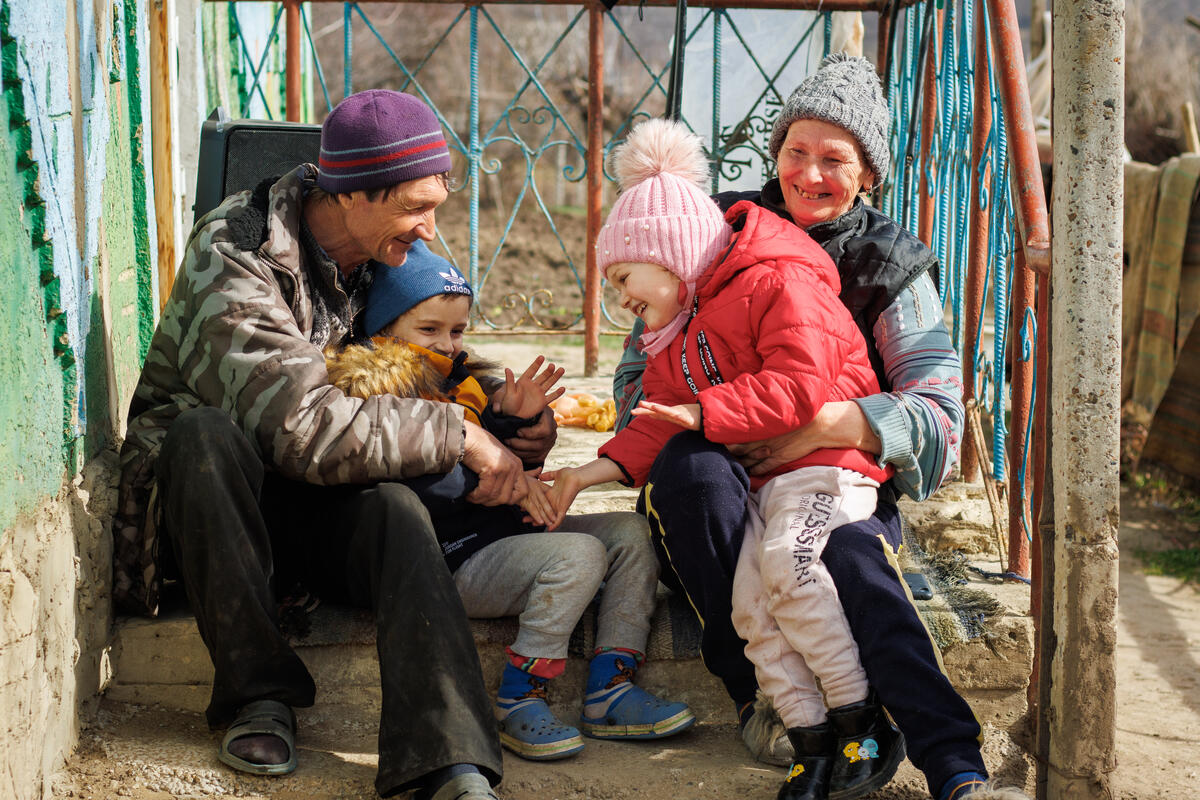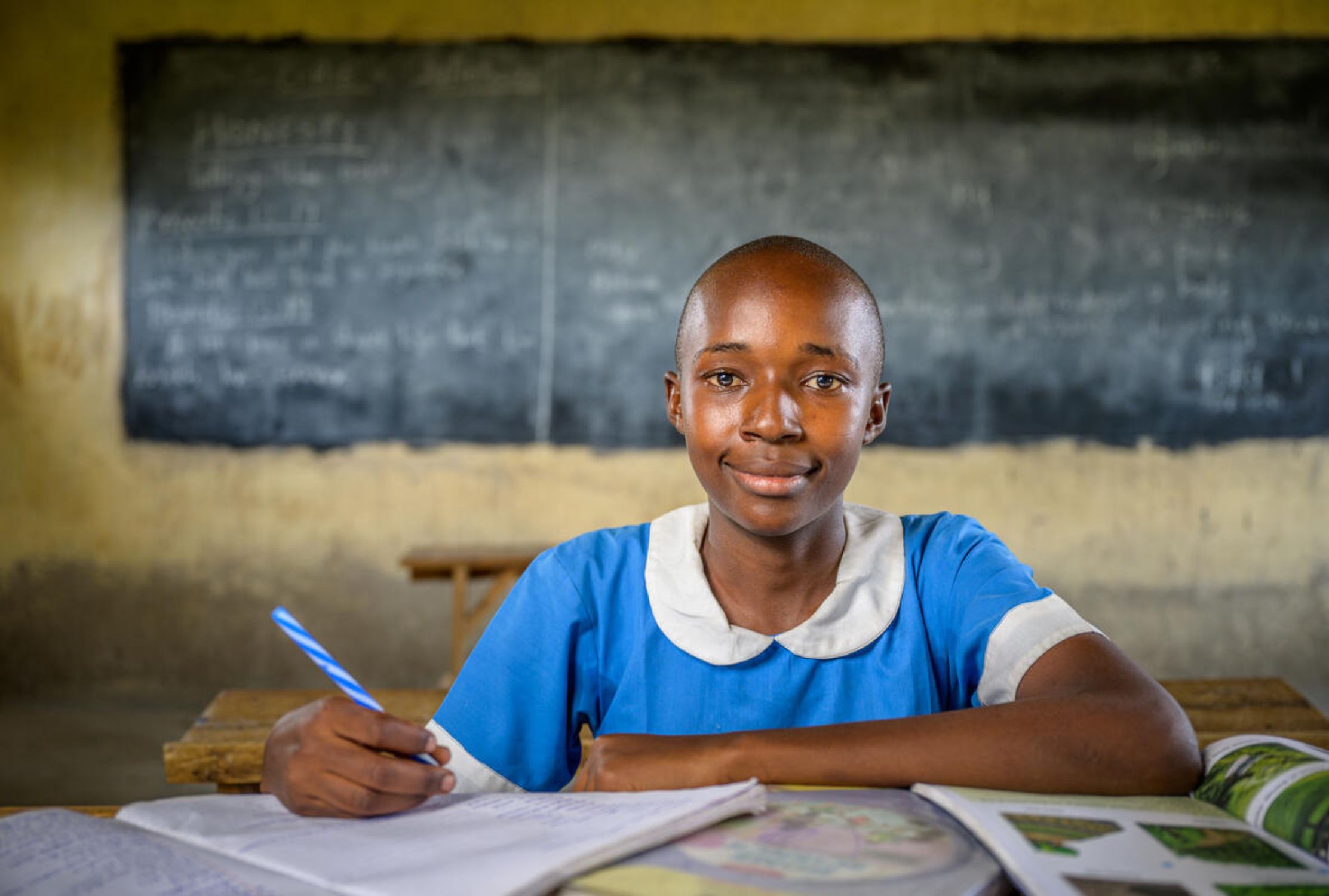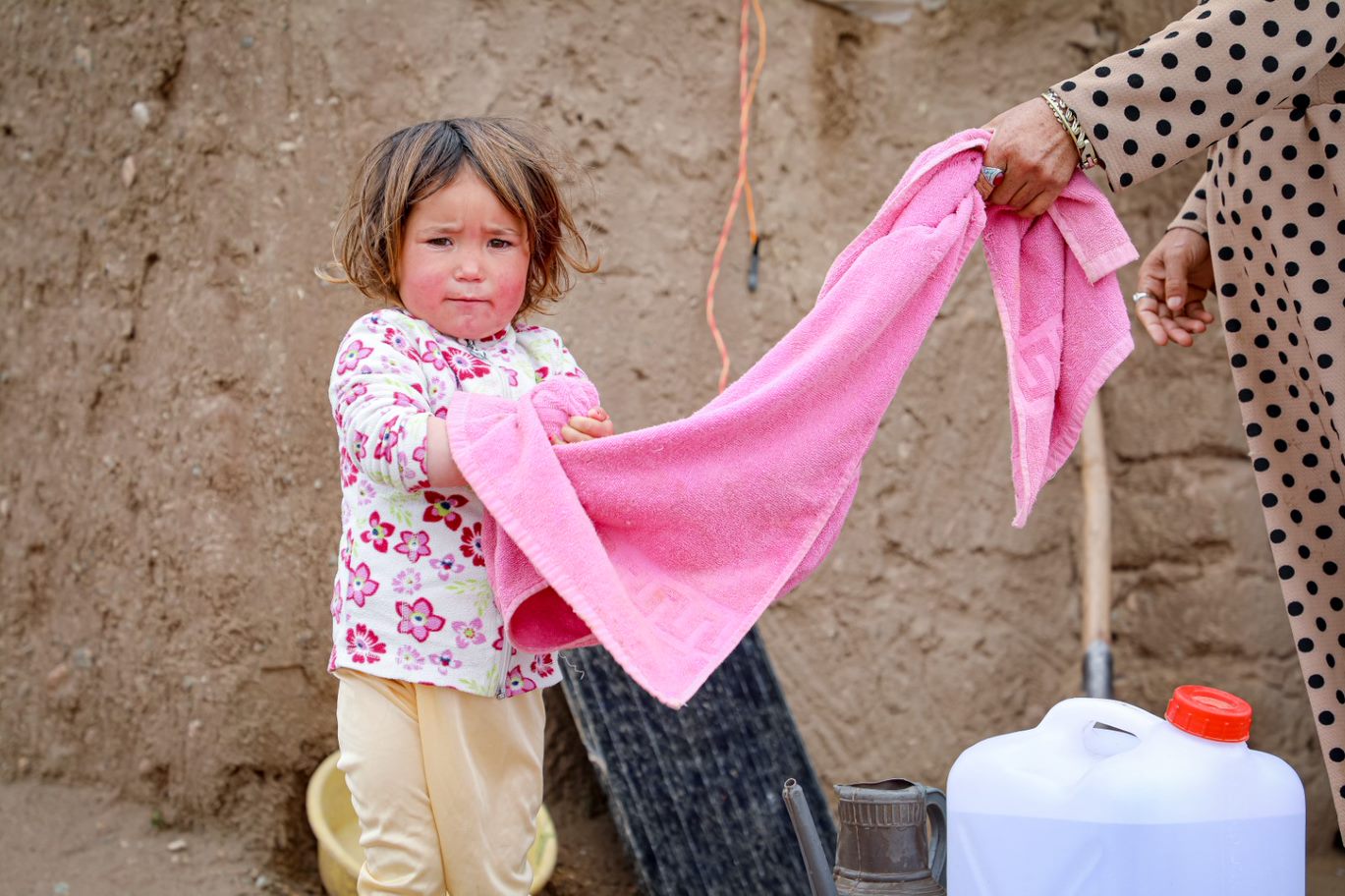
Managing your child's emotions
How to help your child cope with their feelings.
As children age, start to attend school and make new friends, there are so many changes that it can sometimes become overwhelming.
Your child may start to feel frustrated or find it hard to fit in, and they might not understand how to regulate their emotions, but this is often completely normal. There are ways in which, as parents, guardians, family members, or friends, you can help them deal with their emotions and speak about how they are feeling.
How do we help our kids through this?
In the below video, World Vision's Child Communications expert, Steve Richards, introduces ways that we can help children recognise and manage difficult emotions.
Further below, World Vision UK’s Delphine Wolfe explores further how you can help your child deal with this wave of emotions.
How does your child feel about going to school?
From the excitement of seeing their friends, to the anxiety of going to a new school and meeting new people, chances are your child is feeling it all.
It’s only when children share their feelings with us that we, as parents or carers, can provide the support they need. We can help them address their emotions by listening, asking questions, telling them it’s OK to feel that way, or making them laugh. Children often respect and look up to role models like parents and their friends and older children.
But what about younger children? How do you know what they really feel?
Often their behaviour, such as crying, sulking or having a tantrum, is a good indicator that something’s wrong. But do you always know the reason why? How would your relationship improve if your child could tell you exactly how they feel and why?

Healing through stories
In the communities where we work, many children have been through traumatic experiences. They see and hear things that no child should see nor hear. This can have a major impact on their lives as they grow up with fear and, sometimes, lacking the ability to interact with people, manage their emotions, or trust others.
In our Child Friendly Spaces and in partnership with local schools, we use storytelling as a tool to help children express themselves, build their communication skills and have a voice in their community.
Storytelling is by far the easiest and most effective way to engage children with how they feel, help them understand, accept and express their emotions, and increase their confidence so that events from the past don’t negatively impact their future growth and potential.
In fact, giving children the ability to deal with what they’ve experienced, builds them up for the future, giving them courage and the tools to cope with future problems.

The simple storytelling tool
In the above video, our Child Communications expert Steve Richards, explains how you can also use this approach with your children; empower them to speak and write confidently, share their feelings and thoughts, and explore their imagination.
Here’s how in three simple steps:
1. Look and think
- Pick a photo (personal or from the internet) representing a topic of your choice. For example, it could be a photo from your holidays, a family member, a classroom of children, animals, children playing together, family travelling by car or plane, etc.
- Let them explore the pictures and make a connection.
- This is an opportunity for children to reflect for themselves about what they see, their own experiences, and what they would like to share in their stories.
- Don’t tell your child what they see, let them feel and explain it for themselves.
2. Talk and listen
- Encourage children to speak for themselves. Ask your child “What do you see?” Let your child share their ideas by speaking out.
- This will help children voice their thoughts based on what they’ve seen and reflected upon.
- Once they have said what the picture means to them, you can point out more details from the picture.
- Then ask your child to tell a story that relates to the picture, whether it’s a real story based on their experience, retelling a film or from their imagination.
3. Write and draw
Now, ask your child to write down or draw their story.
- This stage is all about details. It’s better to pick one picture and write about it in detail than to pick many and write briefly.
- If your child can’t or doesn’t want to write, you can note down what they say for them. It is really important that the child’s tone and voice is written down authentically.
- Remember that the aim is for children to lead the conversation. Don’t tell the child what they see or what they should write.
This approach inspires children to think deeply about their life experiences, talk about what they feel and include descriptive details in their own stories.
It helps them explore this world of emotions and associate life experiences with what they feel. So that next time your child feels a certain way, they’ll be able to relate to a past event and share this with you: “It feels just like when this happened…”.

Creating deep and meaningful stories
- Senses: The key to helping children express their feelings and address their emotions, is to go deep into their stories by describing them in detail, using all their senses. So, don’t hesitate to ask children about how they (or the character in the story) feel, what they see, hear, touch, smell, taste as they talk and write.
- Activity sheet: To help your child reflect on their own emotions, you can also show them the sheet ‘How do you feel today?’ (with the monkey faces depicting various emotions) from our kids' activities page. Then ask them to point to or colour in the monkey face which best represents how they (or a character) feel in their story.
- Don’t avoid exploring emotions: Including emotional truths makes very powerful and beneficial stories.
- Work as a team: If you have several children, encourage them to be talk partners. They can talk amongst themselves about creative ideas, one can write and the other supports them by talking about their experiences, senses and feelings. This is peer learning and encourages collaboration and teamwork.
Using prompts and sentence openers
- Ask key prompt questions: Why? How? How do you feel? What do you sense?
- Use the questions on the activity sheet to trigger some ideas but try not to rely too much on them. The questions are there as a form of support, not to structure stories. You can also use the sentence openers for children who struggle to write.
- Child-led conversations help children create real and genuine stories that open a window to their world.
Give rewards and support
If you can, give your child the opportunity to voice what they have written. For example, encourage your child to present their stories to family or friends, and give the storyteller a big round of applause. Children thrive when their parents or carers show an active interest in their creation. And praising and encouraging children is vital for their development.
In addition, when various family members are involved in the storytelling process, the environment is enriched with dialogue, creating a great space for children to articulate their own stories and emotions.
This can amplify your child’s voice. It inspires children to believe in themselves and shows them that what they have to say is really important and is valued by others. Even more vital is that we respond actively to what is voiced. Friends, families and communities become enriched too, by this window into their children’s world.
The more your children use the Storyteller’s tool, the easier it becomes. With practice, they’ll be able to express their feelings with more ease, improving their communication skills and reducing their frustrations.
They’ll also become more creative in thinking and writing their own stories, exploring their world of imagination and creating moments of magic.
How World Vision can help
Many children across the globe are fighting to have a voice, and with the help of World Vision's generous sponsors and donations, we can help children living in the hardest places so they can speak freely and understand their emotions.
By donating today, you can help us reach more vulnerable children with the support they need to experience fullness of life.



